Part 44: Summary 2006: For whom the crossing bell tolls
2006: For Whom the Crossing Bell TollsLocomotion Soundtrack - Everlasting High-Rise
Although most of these songs are compiled in a fairly basic sort of way, it's worth a listen to them on headphones. You'll hear quite a few production flourishes that tend to go unnoticed on tinny computer speakers.
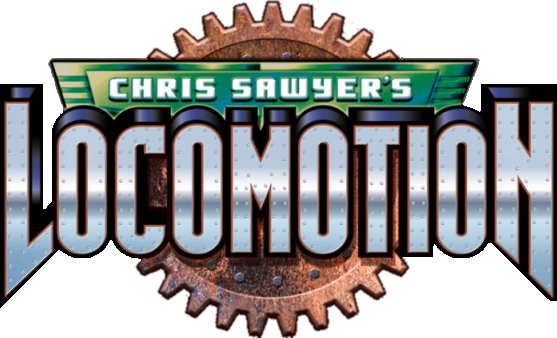
Surveyor's Report:
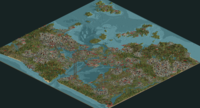
Click for large version!
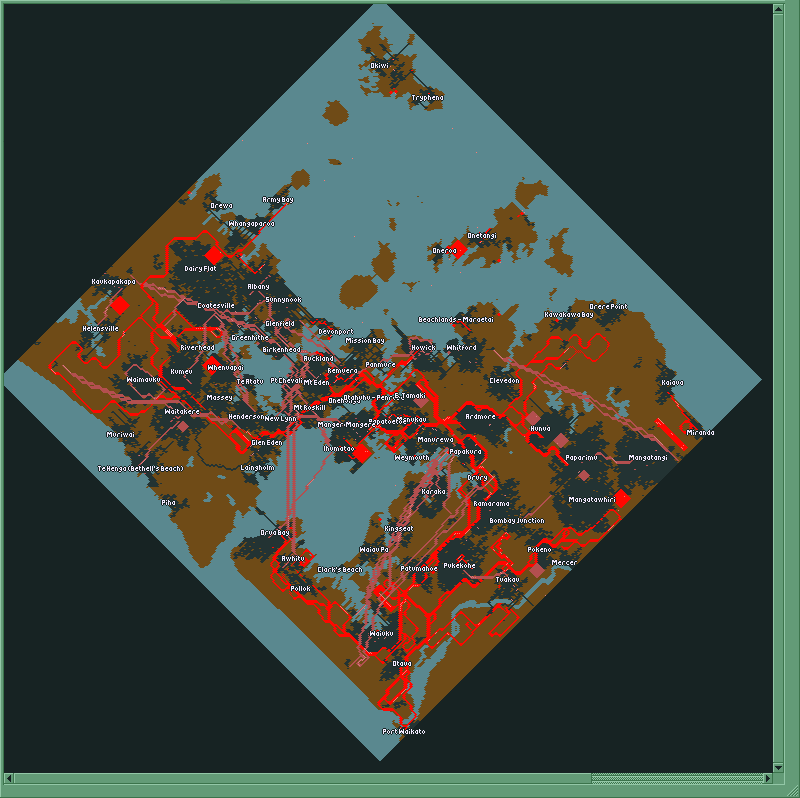
Owners map shows where the two companies concentrated.
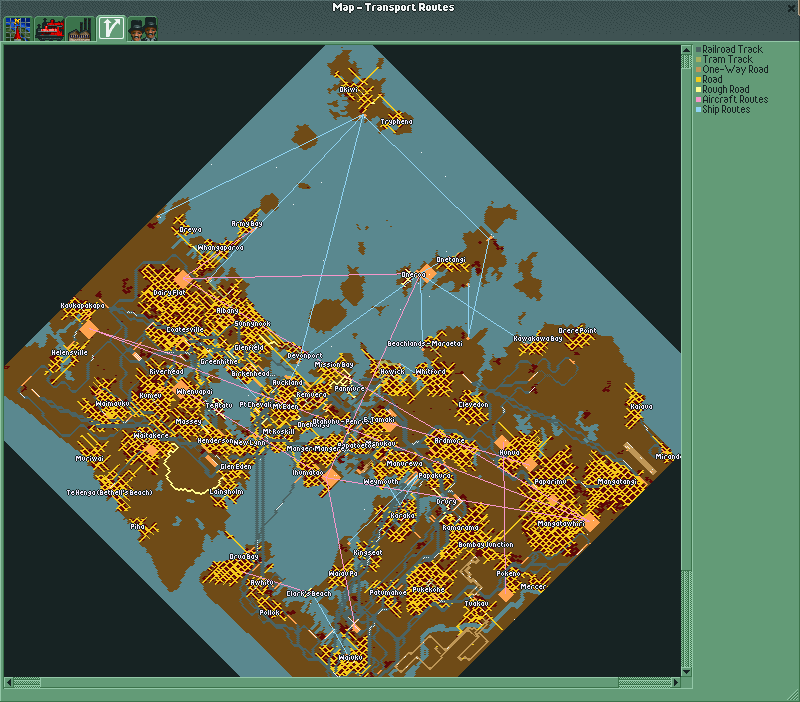
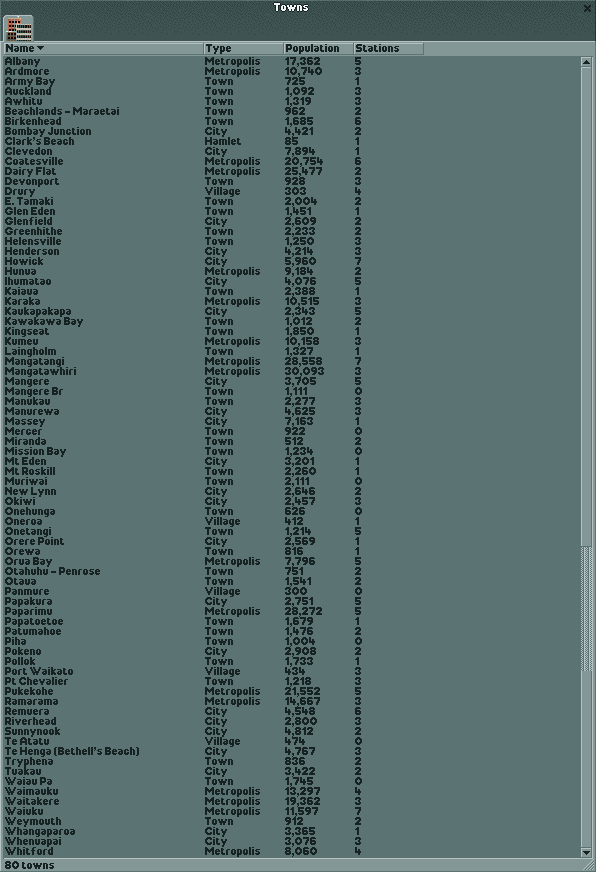
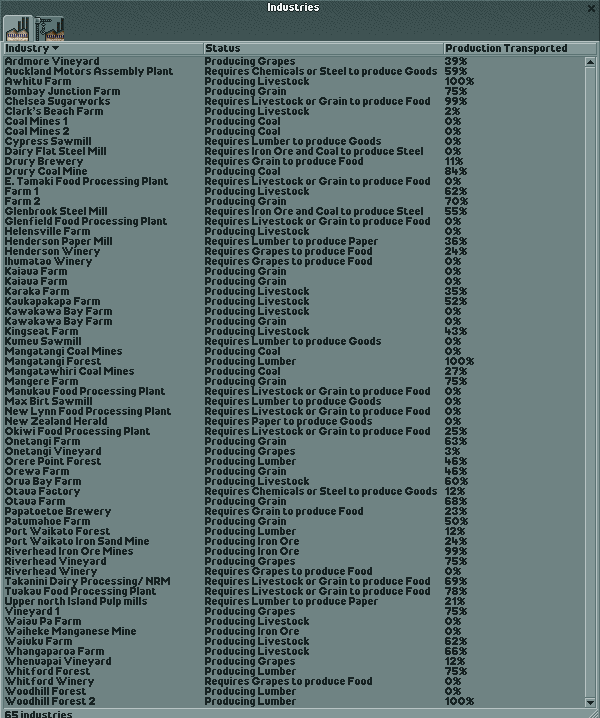
Finance department:
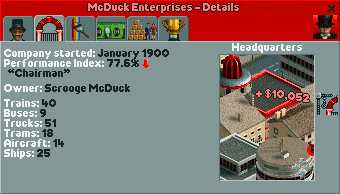
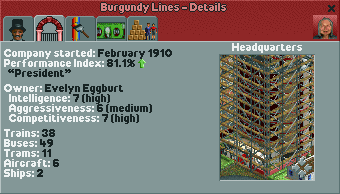
Eggburt went for buses where we went for trucks. I think she suffered quite a bit in the late game closures and reduced her train numbers. Certainly a few viaducts were removed from the most overcrowded areas of the map.
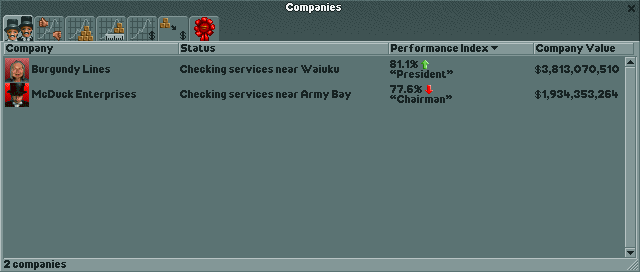
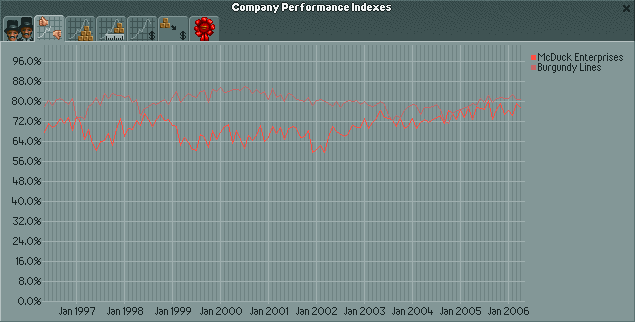
Turns out that we ended up pretty competitive in the later years.
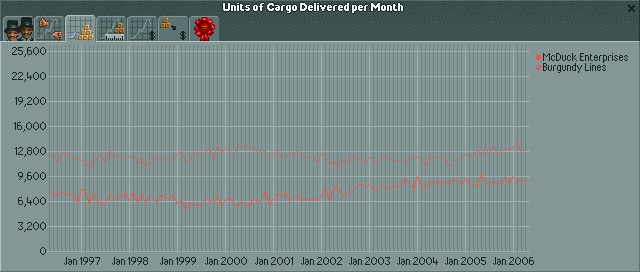
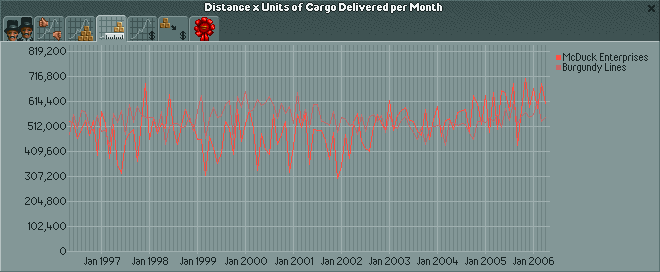
And it would seem that we go for distance over quantity compared to Burgundy.
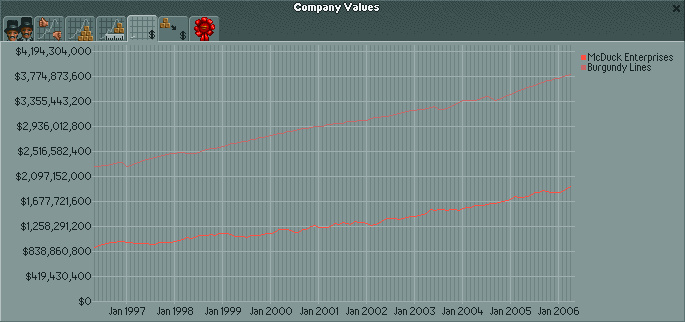
I think that perhaps Burgundy keeps a lot more cash where we tended to plough it all into expanding.
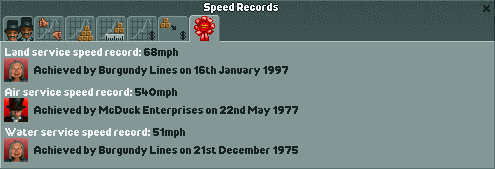
We still hold one of the most prestigious airspeed records.
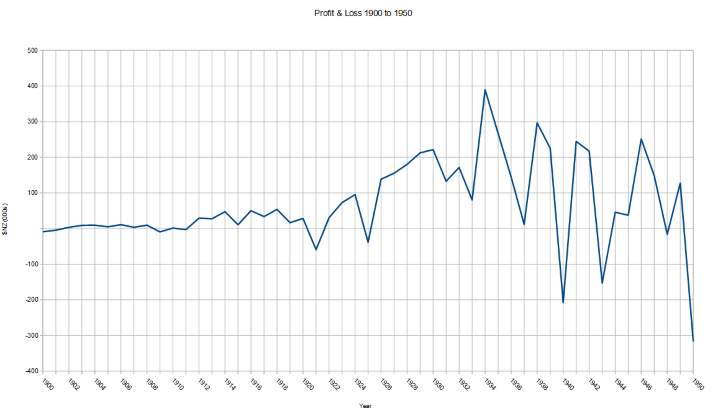
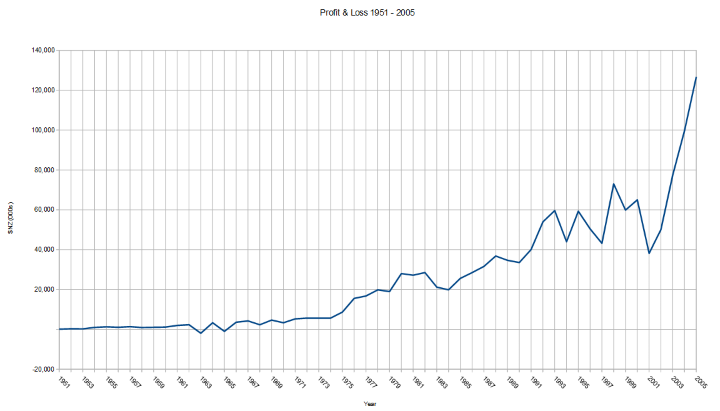
I had to split up most of these graphs to get meaningful information, many of them just show a geometric sequence if 105 years is squashed together.
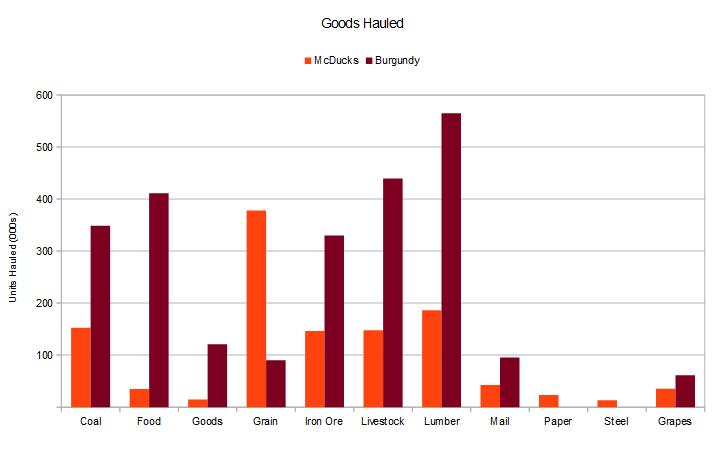

Burgundy beats up in many areas, but there were a few bright spots. We have a more general ability to haul just about anything!
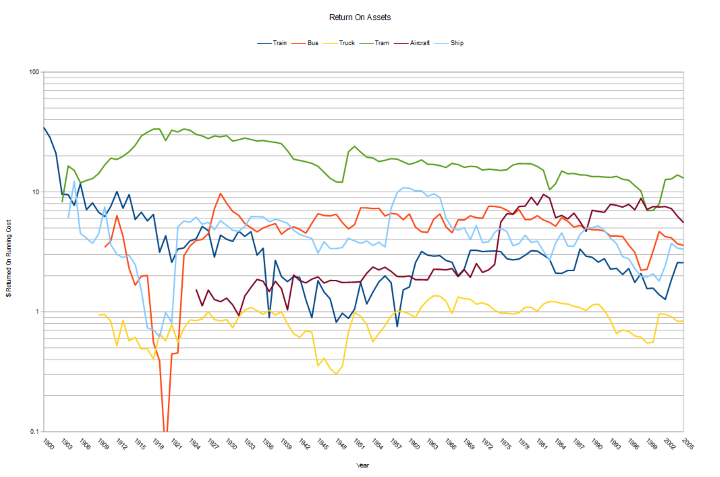
Err, not my finest graph ever and Opencalc's chart tools proved annoying to use, but this graph was intended to show how much bang for your investment buck each vehicle type gave. Anything over one is making a profit. Peak return was 35:1 during the first year or two of train operation!
Operations Department:
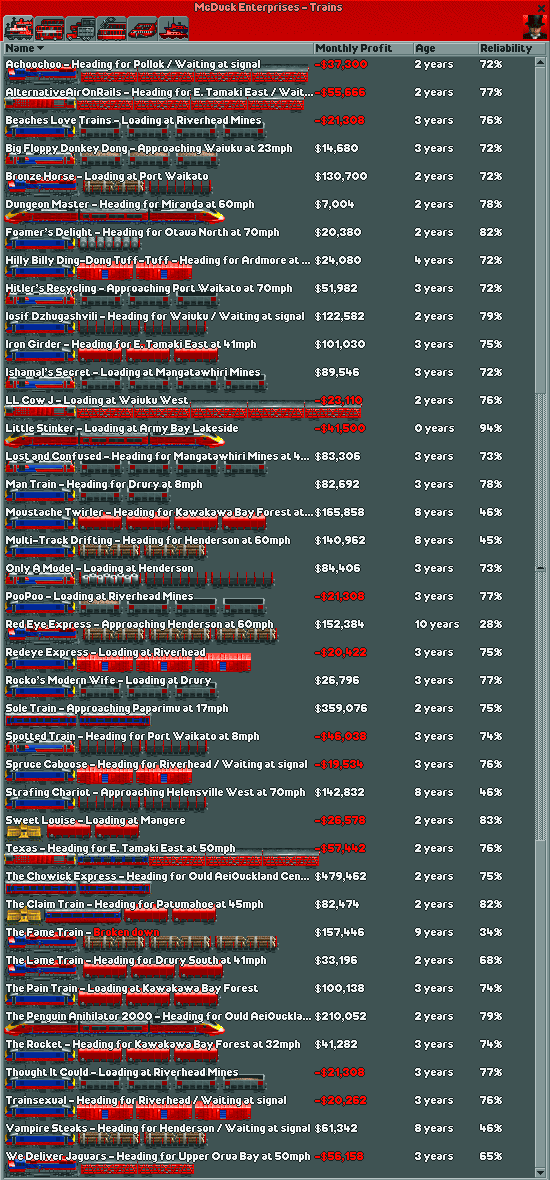
Train 'Rolling Coal' was sold after the Papatoetoe steel mill closed in 2001.
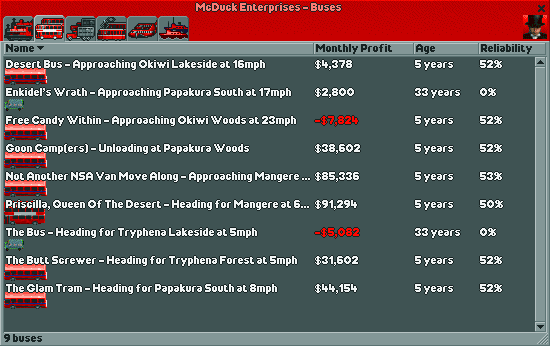
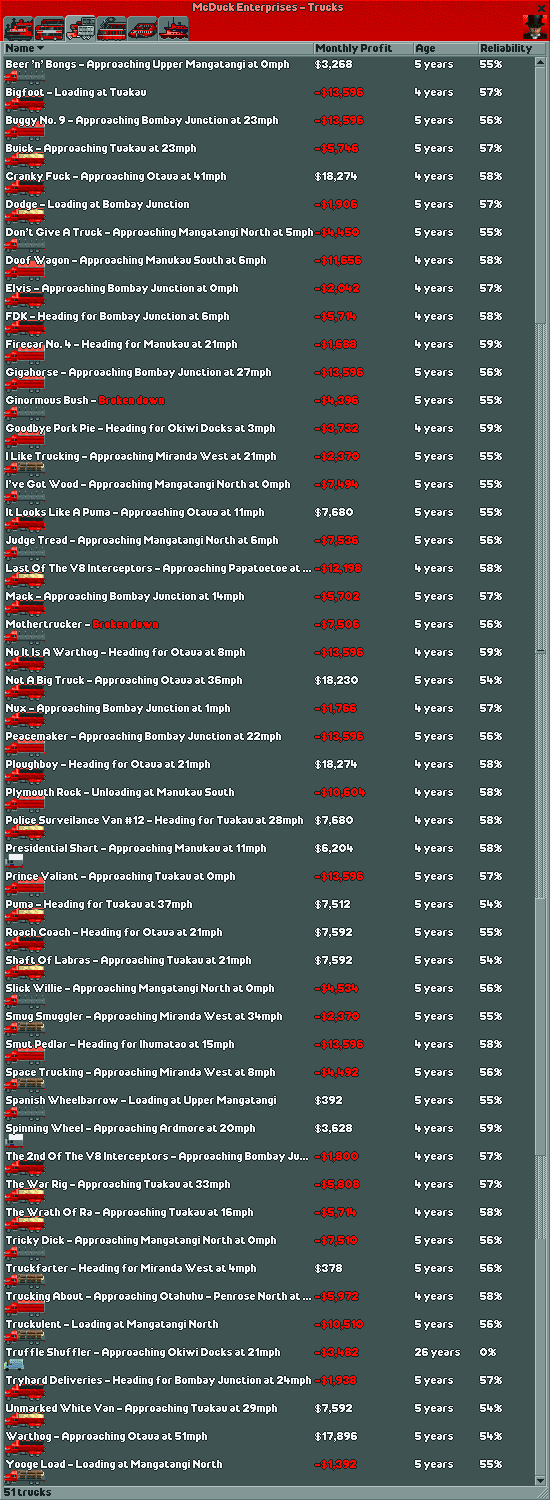

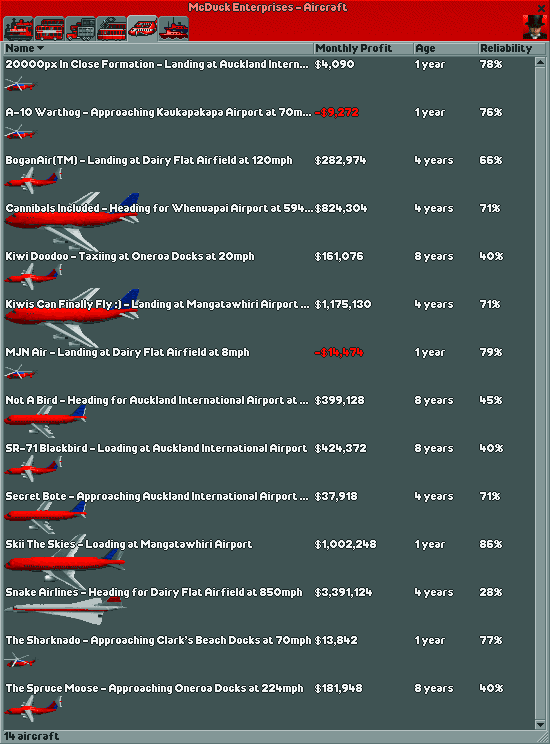

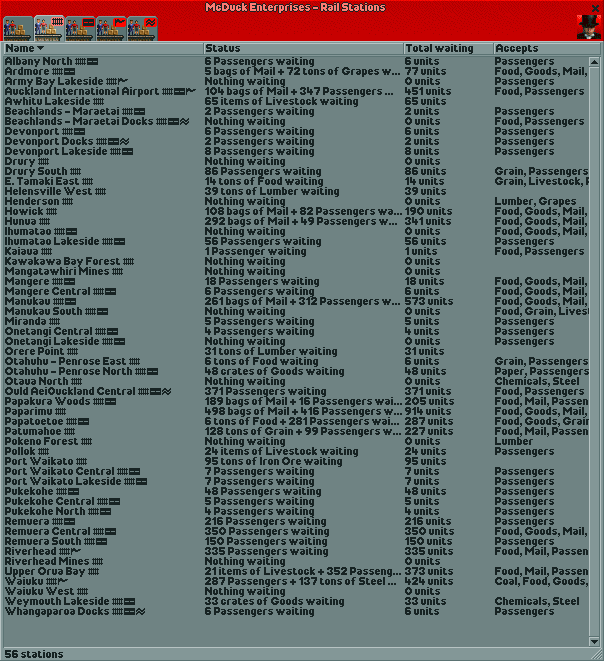
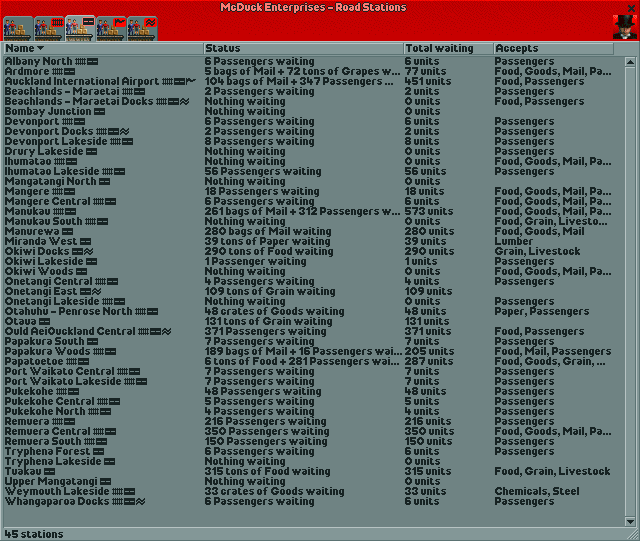

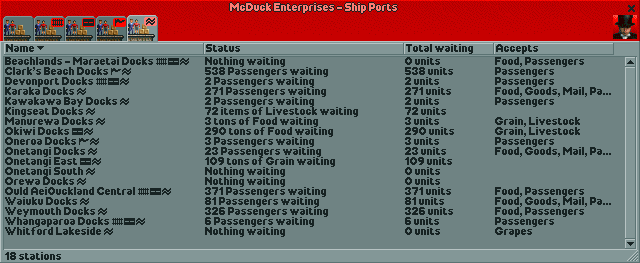
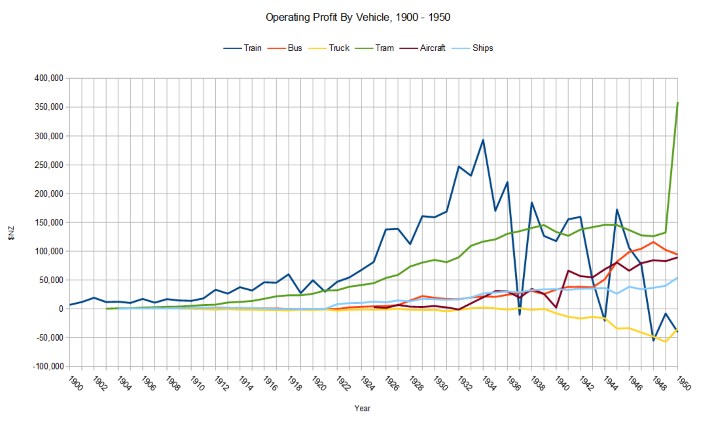
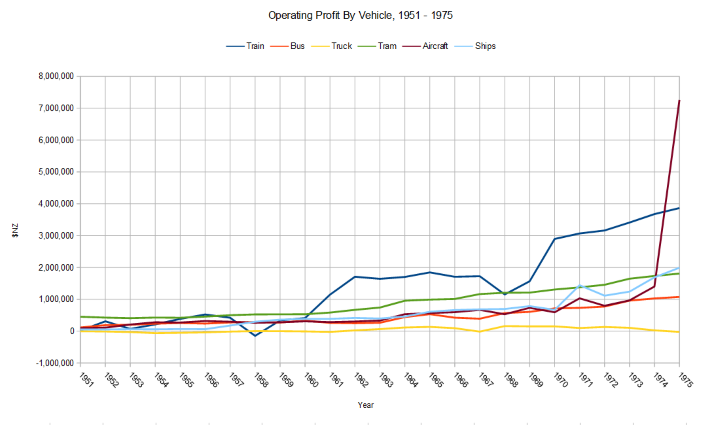
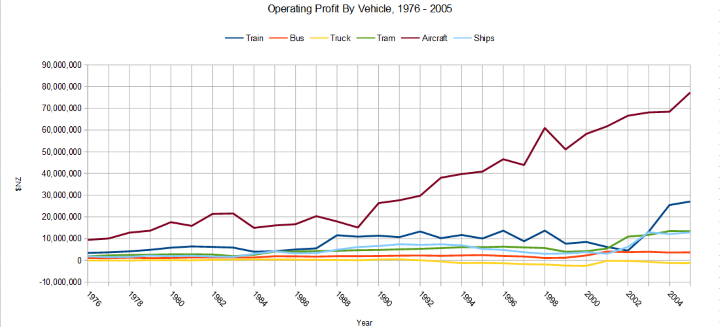
Some basic operating data. There were a few overlooked milestones such as the introduction of the coronation tram in the early 1950s and the ascendancy of widebody jets from the 1970s on. I was rather surprised that our trucks have been underperforming throughout, I thought that they had improved when the larger trucks started coming through in the 1960s.
Manitenance of Way & Property:
Cost, one tile of rail, 1900: $22
Cost, one tile of rail, 2006: $9886
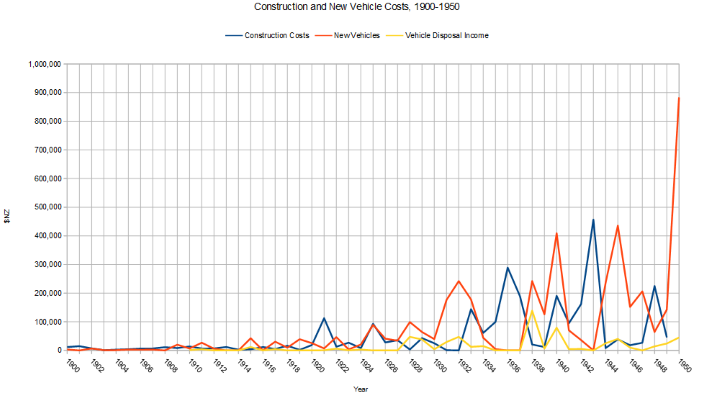
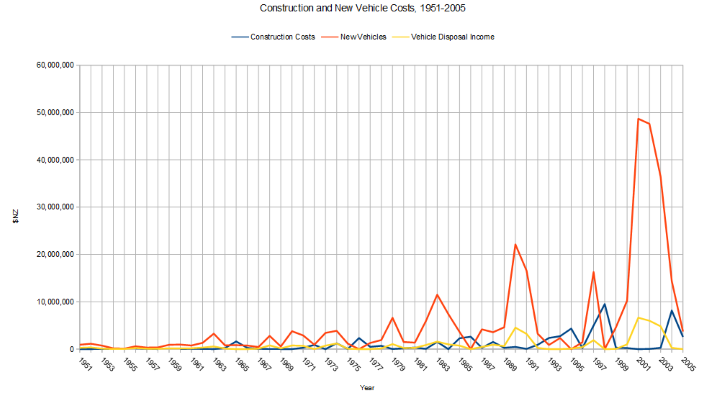
Construction tended to alternate with bouts of buying new vehicles. Sales of old vehicles tended to be fairly insignificant. We must have got rid of some real jalopies in 1942 because we hardly got any residual value back whatsoever! Construction eventually was reversed from the early years and was overshadowed by new vehicles.

While not complete, this is reasonably accurate. Perhaps Scrooge could have been more ruthless in certain areas, but he believed in the right of humankind to fill swimming pools with cash without the door being smashed down.
Planning Department:
Every railway must cross two roads.(Jobbo Fett)
This was rendered moot because the rail was incorporated into a single network. By the end, virtually every railway had dozens of level crossings as the towns grew anyway. But it does make for an interesting challenge if one is building seperate railways.
All rail has to be connected and moderately overcomplicated(Poil) Exception: Rail lines in a
 shape.(Pyroi)
shape.(Pyroi)Achieved While the first few lines were fairly simple, I think that we can all agree that the final system was complex enough.
Develop the island towns(Pierzak)
Partially Achieved The towns on Great Barrier Island developed considerably, although by no standard do they count as metropolises. Meanwhile, the two towns on Waiheke Island stubbornly resisted attempts to change, including a brand new airport with the latest jets to serve it.
Turn Devonport into a sprawling hellhole of the Pacific.(Oystertoadfish)
Not really achieved Although I added a tram system and established a ferry service, I could have done more early on to develop the town by creating a few long distance routes. On the other hand, it was far from the rail system which made it hard to connect. Perhaps I should have invoked the
 clause again.
clause again.Tiles can only be raised or lowered 1 height per project.(Velloxyll)
Achieved Apart from the single network requirement, this was the one that had the most influence on my game. A one tile limit means that you can't dig into flat ground to build a tunnel, which is two levels high. I did comply with this the whole time, bar a cutting I made late in the game instead of a tunnel. When we built the Food plant out on the islands, we had to widen a few harbour entrances which had high hills as well.
Found Auckland airport and build Auckland Airport(Xenoveritas)
Achieved Yep, Auckland International is right where it should be. Whenuapai and Dairy Flat are also based roughly where real life airfields are. However, I can only regard this as a partial victory because I failed to make a TEAL joke during the appropriate era. (There were a few mentions of the Maritime division airfleet that were references to the Union steamship company, which ran it's own airline that was an early ancestor to Air NZ.
Connect preferably by rail Port Waikato and Army Bay.(Xelada)
Achieved right at the very end because the North grew some huge cities before I built and it's hard to dodge them and still have trains go the correct way.
Develop the smallest hamlet into a bustling metropolis(Pea)
Achieved Hunua started with 13 people and ended with 9,184, the 15th largest town, and the game ranks it as a Metropolis, the highest level.
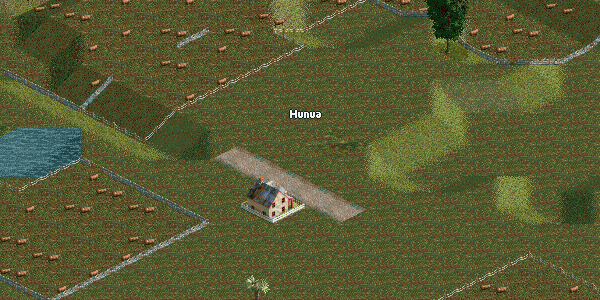
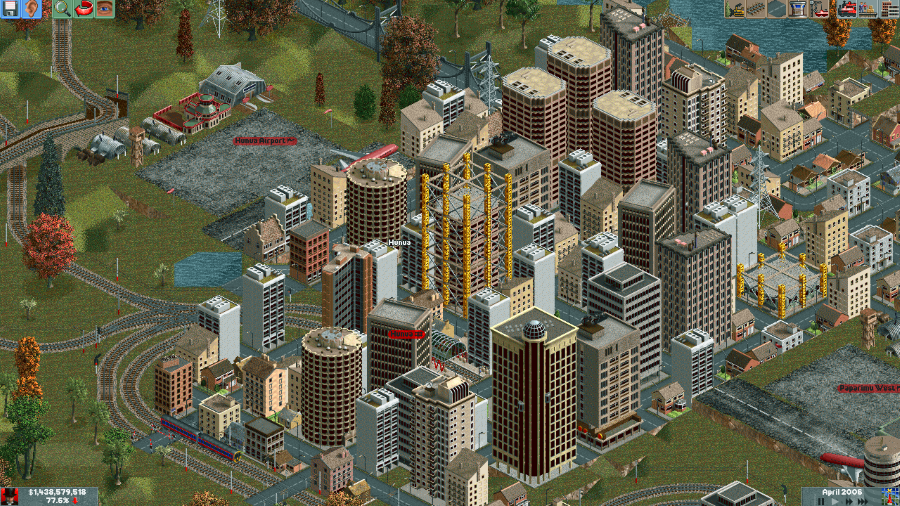
Dominate the South Auckland area by 1940(by vote)
Partially Achieved We connected every industry by the time allowed, but there was no real way to get rid of Burgundy transport once they established themselves in the area.
Connect every industry on the map by 1950(by vote)
Spectacularly failed! Even in 2006, there still remain industries on the map that are unserved. I was way too ambitious here.
R & D department:
Over the past 105 years we have learned some stuff. A lot of the mechanics of the game aren't publicly documented, so here are some of the things we found out in the course of the LP.
Weight of Passengers:The small carriage weighs 16t empty, and total full weight (20 passengers+2 sacks of mail) is 17t. The large one (48 passengers) weighs 34t fully laden. Both seem to get one person free, and then weight goes up 1t every 10 passengers. Mail weighs 1t per 16 bags.
Transshipping: It is possible to transfer cargo at a station. The trouble is that the game doesn't track the cargo very well and it depreciates the load fully the moment it is unloaded for transfer. Ordering a mixed goods train to fully load a certain type of cargo prevents it from accepting other types.The Unload order also counts as 'Don't load this type of cargo here'
Inflation: Is not dynamic. I found that vehicle prices were constant for the same time period from one scenario to another. Is it a constant rate throughout the game? Do different types of purchases inflate at different rates? Those are questions for someone else.
Crash Exploits: I don't think any of the ones from TTD carry through. There doesn't seem to be any way to crash your opponent's locomotives, although you can still spoof AI trucks by building a train on a level crossing tile.
Power vs Speed: Power is generally more efficient on routes except over very long distances. Baldwin locomotives in particular are more efficient than their predecessors, especially with a decent load on.
Pathfinding: Trains use a straight line pathfind to get from waypoint to waypoint. It your trains keep getting lost, it's probably because they are taking a junction that veers in the direction of the straight line even if that's not the one that gets where it wants to go. Sometimes making junctions more square with straight approaches and 90° turns helps. Trains have an approach mode where they reduce speed and try and feed into the station platforms in an even manner. If the trains queue up on one platform, try evening out your entrances.
Song debut dates(Thanks to Tomanton):
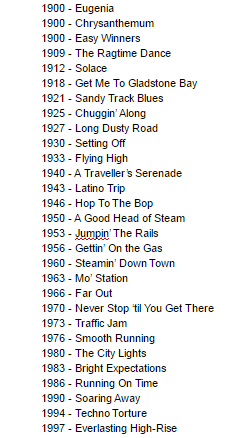
Mod Download:
I've created a new version of the scenario with various improvements:
-Removed about a dozen calibration marks leftover from building the map.
-Removed several trains with duplicate stats. A couple of overpowered early diesel locomotives are gone.
-Added about 20 Aircraft, representing the majority of commercial aviation in NZ. (Except for the early flying boats. I'd love to have them but no-one's made any)
If you don't feel like downloading half a dozen modpacks, there is a vanilla version available too, the only file you need to download is the (vanilla).SC5 file
1. Backup the objdata folder in your locomotion install. If stuff goes wrong with your game, copy it back to start afresh.
2. Get the items in
https://www.dropbox.com/sh/z7v9mymj...k86jVcQJla?dl=0
The scenario file goes in Locomotion/scenarios. It will appear in the 'Challenging' Section when starting a new game.
The DAT files go in the Objdata folder. They are the modded objects.
3. Get this North American Mega-pack(136mB) which will install about a million billion SD-70 variants. Follow the install instructions, for my scenario, you should only need the cargo vehicles pack.
4. Enhanced Airport Pack 1.1:http://forum.locomotiondepot.net/download.php?id=24
Custom Church: Contained in dropbox folder. Original at bottom of page here
Ford Transits: This was a german mod that I translated. The translated files are in the dropbox link. Original Download MK1 MK2
Version 2 also uses:
Earth slopes: http://cache.locomotiondepot.net/view.php?item=32
Aircraft Pack: https://chrissawyerslocomotionword....ny-edition-1-0/. Be careful not to install it to C:\Locomotion\Locomotion, this joker set up his installer in an odd way.